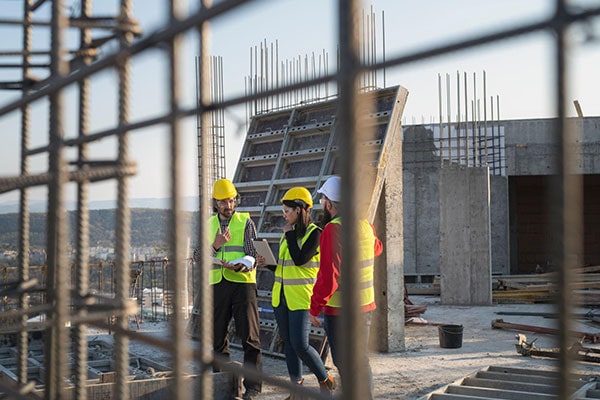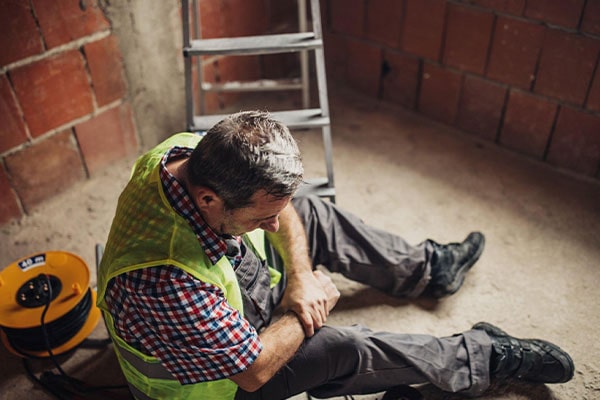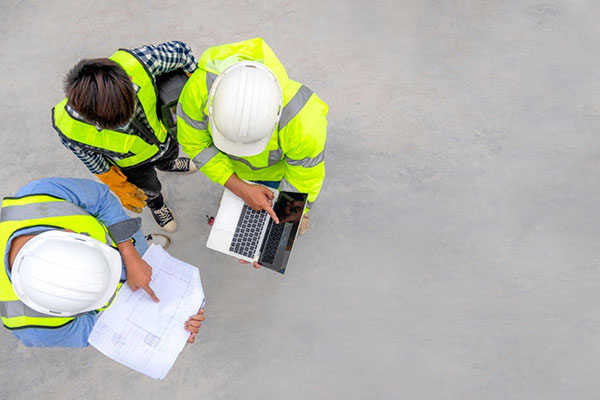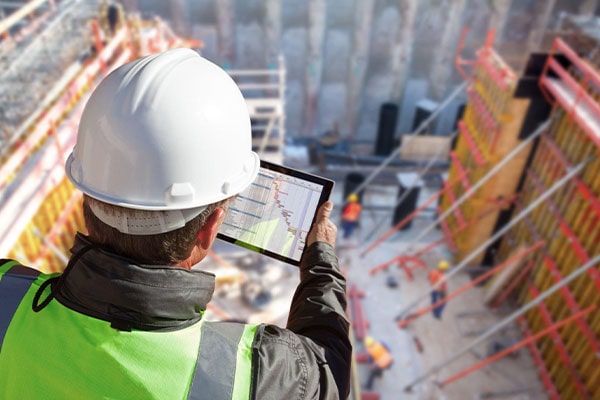How to keep workers safe on construction sites

Some primary adverse outcomes associated with construction sites are injury, illness, long-term damage and mental health issues. Site managers and employees need to be protected from these workplace hazards. Working on a construction site is a hazardous activity filled with high-risk accidents.
Additionally, even when we are talking off-site, there are an increasing number of complex health and safety risks. If you wish to attract the best workers and retain your clients, as a business owner, you need to understand the best methods to prevent construction site hazards and optimise the safety of your work sites.
To help you understand the relevance of the long-term damage that construction sites create, 70% of the workers suffer from respiratory disorders due to the constant dust in the air, 13% of the workers suffer from some type of hearing deficiency, and 15% suffer from skeletal or muscular disorders, a direct consequence of hauling heavy loads. Moreover, according to the International Labour Organisation (ILO), approximately two construction workers die daily from work-related injuries and falls. If this number does not sound alarming, consider that one in five workplace fatalities across the globe occurs at construction sites.

Hence, understanding how these hazards can be identified, prevented or mitigated can help you create better working conditions for yourself and your workers. Moreover, understanding how measures can enhance the workplace environment is critical for ensuring the well-being of your workers and your business.
Construction work hazards and risks
Although the construction work site is peppered with numerous risks for employees, the most common risk is that of falling. According to the Occupational Safety and Health Administration (OSHA), a census revealed that falling was the number one cause of injury at work in 2019.
Falls exceeded transportation incidents, the number one cause of injuries and fatalities in the same year. A study by the Bureau of Labour Statistics in America states that the number of falls, trips and slips increased by 11% in 2021 compared to 2019. When we think of falls, we imagine workers falling from greater heights, but tripping over wires and unattended tools often causes fatalities.
The second most common hazard prevalent in a construction site is exposure to harmful substances, eventually leading to the death of 648 workers in 2019. The third leading cause of fatalities was fires and explosions; however, thankfully, this number is decreasing.
The same study also revealed unintentional causes of death, such as overdose due to non-medical usage of drugs or substance abuse.

Although some business owners think that only the first four categories are relevant to a construction site, as a business owner, you should not underestimate the risk of unintentional overdosing, as it is directly correlated to the mental health of your workers. It is common knowledge that people resort to substances, drugs and alcohol as a coping method to deal with their deteriorating mental health.
The alarming aspect of all these categories is that they have been slowly increasing in recent years. This implies that workers’ health and well-being are suffering despite standardisation, regulation and increased awareness. The numbers indicate that newer strategies must be implemented to protect their health.
Similarly, in addition to the list of common construction work hazards and risks, another top cause of fatalities is worth highlighting.
Workplace injuries at construction sites also occur because of a lack of communication or unclear training. Both of these aspects are grouped as they are strongly correlated to each other.
Even if you have implemented safety practices in your construction site that are not communicated to all workers across your organisation, these safety practices will be ineffective.
Similarly, despite having the best safety practices, the program will be ineffective if your employees do not pay attention to the training program or remain unfocused or inattentive. Communication and training go hand-in-hand to prevent workplace injuries by enhancing and fostering a safety culture.

Moreover, hiring individuals who are appropriately trained for their tasks is essential. For example, deficiency in masonry walls contributed to 10.3% of accidents in 2019. Similarly, electrocution due to coming in contact with power lines or improper equipment usage led to 11% of all accidents in 2018. These are both linked to improper training.
Consequences of construction hazards
The whole story about the construction environment is not told if you just focus on the risks and hazards. You need to factor in the human and economic points of view to understand the consequences of construction hazards. In fact, beyond mental harm, physical injury or death, construction hazards pay a high toll by negatively impacting the business.
The immediate consequence of injuries in the construction industry is financial. As of 2018, the total cost of all non-fatal and fatal injuries was estimated to be $21.5 billion, making up almost 17 Percent of the cost of all private industries.
With the average cost of each injury coming up to $27,000, it is sheer stupidity to let hazards go unchecked in the construction industry.

Additionally, employers incur significant fines if they violate regulatory standards. Not only are employers verbally warned where they are lacking, but some violations can cost them more than $13,000. The amount increases if they undergo repeated violations, and the harm to the brand is irreversible.
Another subtle effect of construction hazards is the damage it causes to the mental health of the business owner and everyone involved in the construction project. Repercussions can range from anxiety, depression or stress. Such illnesses are on the rise in the construction industry, causing employees to miss work, which snowballs into significant losses for the employer.
Lastly, death cannot be quantified. It is an irreplaceable loss. The impact of an accident can be monumental and can even lead to the loss of an entire family’s livelihood. It is especially true for minority communities where the breadwinner usually works at the construction site.
How to prevent accidents and keep workers safe?
Organisations can choose to implement occupational health and safety systems to enhance the safety of their workplaces and mitigate all risks. The business owner’s moral duty towards the employees is to extend help so that their mental well-being is maintained. Business is beyond making profits; sometimes, the real profit is treating your employees well.
Some common revelations that employers can follow to provide a safe workplace include:
• Ensuring that the construction sites are free from recognised hazards.
• Complying with all regulatory, statutory and federal standards, rules and regulations.
• Examining working conditions to ensure that they are complying with the standards.
• Providing safe tools and adequate equipment.
• Regularly evaluate the efficiency of the equipment to ensure that they are still safe and reliable.
• Providing appropriate training programmes to ensure your staff is adequately trained to utilise the equipment.
• Ensuring that accurate warnings are put in place to highlight potential hazards.
• Having clear operating procedures that are regularly updated and communicated clearly to all employees.
• Ensuring that the training is provided in the preferred language of the workers and that the vocabulary is easy to understand.
• Conduct regular medical exams.
Although the list is exhaustive, it is not limited to these pointers. For a more practical approach to workplace safety, implementing ISO 45001-based Occupational Health and Safety Management System (OHSMS) is helpful, as it customises the framework per the construction organisation’s unique needs. Additionally, your brand recognition increases after implementing an internationally recognised certificate.

